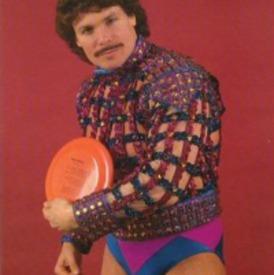Correct proportions for balanced body weight lifting?

Doberdawn
Posts: 733 Member
I learned an important lesson years ago when I got into using weights to strengthen my legs while I was running track. I started to develop knee problelms and had to consult with a sports medicine specialist. I learned at that time that my hamstrings were too strong and were disproportionate to my legs which was stressing my knees. Apparently, the hamstrings should always be 1/3 the strength of the quadriceps. So, if you're going to do weights (e.g. leg curls with the hams, and leg extensions with the quads), you should be doing 1/3 the amount of weight with the hams. Don't increase the hams (even if you can) until you build the quads proportionally to remain 2/3s stronger (e.g. work 20 pounds with hams and 60 pounds with quads).
Now that I'm starting to weight lift for conditioning my whole body and to rebuild lean muscle mass, I was remembering this key lesson. My concern is that I don't know what other key balances there are to the body like this. For example, is there a ratio that must be maintained between the triceps and biceps? Is there one between the pecs and lats?
Do any of you know? I'm trying to google and find it... but I'm hoping that the fount of knowledge from all the lifters on here can help me out with a cliff notes version.
Now that I'm starting to weight lift for conditioning my whole body and to rebuild lean muscle mass, I was remembering this key lesson. My concern is that I don't know what other key balances there are to the body like this. For example, is there a ratio that must be maintained between the triceps and biceps? Is there one between the pecs and lats?
Do any of you know? I'm trying to google and find it... but I'm hoping that the fount of knowledge from all the lifters on here can help me out with a cliff notes version.
0
Replies
-
For those who don't know what I'm talking about, here is one article that talks about some of the body's proper muscle balances: http://www.brianmac.co.uk/articles/article041.htm
It lists some muscle group balances as follows:
the current standard for muscle balance ratios, recommended for the agonist-antagonist muscle groups are:
Muscle Groups Muscle Balance Ratio Weight(example)
Ankle Inverters & Everters 1:1 25::25
Ankle Plantar Flexors & Dorsiflexors 3:1 75::25
Elbow Flexors & Extensors 1:1 25::25
Hip Flexors & Extensors 1:1 25::25
Knee Flexors & Extensors 2:3 50::75
Shoulder Internal & External Rotators 3:2 75::50
Shoulder Flexors & Extensors 2:3 50::75
Trunk Flexors & Extensors 1:1 25::25
Unfortunately, this doesn't really help me answer my question re building biceps vs. triceps etc. so my research continues.0 -
I hadn't heard about this but it sounds logical, thanks for sharing. Also interested in responses.0
-
Totally frustrating as a research project so far. LOL I find articles like this that talk about how urgently critical it is to have your body's structural balance assessed and to maintain a proper balance while building, but doesn't really provide any firm guidelines on what that balance should be. Grrrrr. http://www.metrowestdailynews.com/lifestyle/columnists/x1498053337/MAKE-A-MUSCLE-Structural-balance-is-key-to-your-bodys-framework?zc_p=00
-
Found this, but feel like I need a translator. I think it means that bench press and pull up strength should be equal. Is that what y'all get from it? But, then again, all it says is that this bunch of athletes were equal... not that it is advisable... did they get injured more often or less when equal? They are, therefor you should? Huh? Grrr... back to research.
The Journal of Strength and Conditioning Research
Article: pp. 594–598 | Abstract
Volume 18, Issue 3 (August 2004)
An Analysis of the Ratio and Relationship Between Upper Body Pressing and Pulling Strength
Daniel G. Baker1, 2 and Robert U. Newton1
1. School of Biomedical and Sport Science, Edith Cowan University, Joondalup, Australia,
Baker, D.G., and R.U. Newton. An analysis of the ratio and relationship between upper body pressing and pulling strength. J. Strength Cond. Res. 18(3):594–598. 2004.—It has been posited that certain balances in strength should exist for opposing muscle groups (e.g., hamstrings and quadriceps) or actions (e.g., internal and external rotation of the shoulder) to improve sports performance or limit the likelihood of injury. Typically, expensive laboratory equipment such as isokinetic devices has been used to evaluate strength balances. The purpose of this study was to determine if two popular field tests of strength could be used to assess a concise strength balance in roughly opposing muscle actions for the shoulder girdle. The two opposing movement actions of pressing away from the shoulder girdle and pulling in towards the shoulder girdle were assessed via the 1 repetition maximum bench press (1RM BP) and 1 repetition maximum pull-up (1RM PU), respectively. Forty-two rugby league players, comprising 21 national league (NRL) and 21 state league (SRL) players, who regularly performed both exercises in their training, served as subjects in this investigation. The equivalence of the strength ratio (BP/PU × 100) and correlation between tests were also examined. The pooled data exhibited a strength ratio of 97.7% (9.0%) and correlation of r = 0.81 between the 1RM BP of 130.1 ± 20.2 kg and 1RM PU of 133.1 ± 17.1 kg. The small standard deviation exhibited tends to indicate that athletes should exhibit a concise ratio of around 100% if pressing and pulling strength have been addressed fairly equally in training. However, some athletes may have body types, preexisting injuries, or training histories that predispose them to either excelling or performing poorly during strength activities for either upper body pressing or pulling actions, with differences in strength of up to 15% existing in some individuals. These factors need to be taken into account when prescribing training based upon the strength ratio between pressing and pulling strength.0 -
This article helps a little by also emphasizing the importance of maintaining balance and by identifying what the groups and pairings of muscles are and what they do. This way you know which pairs must be worked together. But, it still doesn't say if they should be kept equal in strength or if one should be kept stronger than the other as the sports med doc told me to do with my hams and quads. hmmmm
Muscle Pairs Movement
biceps and triceps bending and straightening the elbow
deltoids and lattisimus dorsi lifting the arm and lowering the arm
pectorals and trapezius moving the arms/shoulders forward and backward (arms are held horizontal and shoulder high for this movement)
abdominals and erector spinae bending the spine forward and backward
quadriceps and hamstrings bending and straightening of the knee
hip abductors and adductors moving the legs apart and together
gastrocnemius and tibialis anterior standing on your toes or pulling your toes up toward your shin
iliopsoas and gluteals lifting the knee or moving the knee backward
http://wellness.lattc.edu/aquatics/musclebal.html0 -
I'm starting to wonder if there are weight lifters on this site? I hadn't heard of that but it definitely is something to be aware of when I start weight lifting. Right now, my weight lifting involves carrying my dog around when he wants a hug. Grin.0
-
This is pretty irrelevant if you train movements instead of muscles, balance will create itself. Don't over emphasize some movements to the detriment of others. push, pull, jump, run0
-
You could probably do an informal survey and build the ratio from that... Assuming people dont have elbow or shoulder issues couldn't you take what people comfortably curl and tri-extend and build a fairly accurate ratio from there?
If I'm in the range of normal, the ratio would be curling about 1.4x's your tri ext. Im sure others vary.0 -
This is pretty irrelevant if you train movements instead of muscles, balance will create itself. Don't over emphasize some movements to the detriment of others. push, pull, jump, run
NOT true! I was quite comfortable doing the leg curls, extensions, and presses that I was doing before when I ran into knee trouble. By then, damage was done and I had to do rehab.0 -
You could probably do an informal survey and build the ratio from that... Assuming people dont have elbow or shoulder issues couldn't you take what people comfortably curl and tri-extend and build a fairly accurate ratio from there?
If I'm in the range of normal, the ratio would be curling about 1.4x's your tri ext. Im sure others vary.
Thank you. That's an idea & helpful that you provided your stats too.0 -
I'm starting to wonder if there are weight lifters on this site? I hadn't heard of that but it definitely is something to be aware of when I start weight lifting. Right now, my weight lifting involves carrying my dog around when he wants a hug. Grin.
I know that there are because I see their posts about deadlifts & squats. Maybe they just don't know?0 -
For those who don't know what I'm talking about, here is one article that talks about some of the body's proper muscle balances: http://www.brianmac.co.uk/articles/article041.htm
It lists some muscle group balances as follows:
the current standard for muscle balance ratios, recommended for the agonist-antagonist muscle groups are:
Muscle Groups Muscle Balance Ratio Weight(example)
Ankle Inverters & Everters 1:1 25::25
Ankle Plantar Flexors & Dorsiflexors 3:1 75::25
Elbow Flexors & Extensors 1:1 25::25
Hip Flexors & Extensors 1:1 25::25
Knee Flexors & Extensors 2:3 50::75
Shoulder Internal & External Rotators 3:2 75::50
Shoulder Flexors & Extensors 2:3 50::75
Trunk Flexors & Extensors 1:1 25::25
Unfortunately, this doesn't really help me answer my question re building biceps vs. triceps etc. so my research continues.
Hi Doberdawn - I am a certified personal trainer. I stumbled upon your post a few months late but in case you still check this post I wanted to let you know that you have the answer to your own question regarding biceps/triceps balance right here. The biceps are responsible for bending the elbow (elbow flexors) and the triceps are responsible for straightening the elbow (elbow extensors) - so the strength ratio should be 1:1 as stated in the list above. Also the pecs and lats are not opposing muscle groups. The agonist/antagonist relationships are the pecs vs the rhomboids - example: chest press vs seated row - and the lats (shoulder extensors) vs the anterior deltoids (shoulder flexors) - example: lat pulldowns/pullovers vs front raises.
Also in the table above, your quads (knee extensors) and hamstrings (knee flexors) should be a ratio of 3:2. In your previous post you said that someone informed you to aim for a 3:1 ratio but that is not a good ratio. I am wondering if that is your existing ratio, as this would account for the weakness in your hamstrings? Having your quads 3 times stronger than your hamstrings would make you much more susceptible to hamstring injury. You don't want a difference greater than a 2:1 ratio. The ideal ratio is 4:3 but the 3:2 ratio stated above is a good standard. Hope this helps!0 -
This is pretty irrelevant if you train movements instead of muscles, balance will create itself. Don't over emphasize some movements to the detriment of others. push, pull, jump, run
I'm with this
Do compound movements and not isolation exercises and you will have no problems0 -
This is pretty irrelevant if you train movements instead of muscles, balance will create itself. Don't over emphasize some movements to the detriment of others. push, pull, jump, run
NOT true! I was quite comfortable doing the leg curls, extensions, and presses that I was doing before when I ran into knee trouble. By then, damage was done and I had to do rehab.
The curls and extensions are not movements, they are isolation exercises. Leg presses remove a lot of the kinetic chain as well.
If your main leg exercises are squats and deadlifts, or in the world of bodyweight, pistol squats, hill sprints, and glute-ham raises, you will be hard pressed to develop muscle imbalances, unless you have serious activation issues, muscle balance will create itself.
The only serious muscle balance issue to be on the lookout for if you primarily train movements (compound exercises) is upper body push-pull. Getting out of whack can mess up your shoulders (bench pressing syndrome). Ideally there should be a 1:1 balance between chinups and dips (weighted or unweighted). Too much pressing and not enough pulling causes the shoulders to hunch forward and the arms to internally rotate at rest.0 -
The curls and extensions are not movements, they are isolation exercises. Leg presses remove a lot of the kinetic chain as well.
If your main leg exercises are squats and deadlifts, or in the world of bodyweight, pistol squats, hill sprints, and glute-ham raises, you will be hard pressed to develop muscle imbalances, unless you have serious activation issues, muscle balance will create itself.
The only serious muscle balance issue to be on the lookout for if you primarily train movements (compound exercises) is upper body push-pull. Getting out of whack can mess up your shoulders (bench pressing syndrome). Ideally there should be a 1:1 balance between chinups and dips (weighted or unweighted). Too much pressing and not enough pulling causes the shoulders to hunch forward and the arms to internally rotate at rest.
I wish there was a "like" button! I'm with you on the benefits of functional training vs isolated weight lifting...0 -
Thank you all for the continued replies. I am still watching this thread for input.0
-
This is pretty irrelevant if you train movements instead of muscles, balance will create itself. Don't over emphasize some movements to the detriment of others. push, pull, jump, run
I'm with this
Do compound movements and not isolation exercises and you will have no problems
I "third" this. Isolation exercises do squat (no pun intended) if you are not doing compound movements. Isolation exercises should ONLY be done to strengthen abnormally weak muscles to make compound movements better.0 -
This is pretty irrelevant if you train movements instead of muscles, balance will create itself. Don't over emphasize some movements to the detriment of others. push, pull, jump, run
I'm with this
Do compound movements and not isolation exercises and you will have no problems
I "third" this. Isolation exercises do squat (no pun intended) if you are not doing compound movements. Isolation exercises should ONLY be done to strengthen abnormally weak muscles to make compound movements better.
great post.0 -
Love this thread. Wish there were some answers. I suppose everyone is different, and there is a range of acceptable.0
-
This is pretty irrelevant if you train movements instead of muscles, balance will create itself. Don't over emphasize some movements to the detriment of others. push, pull, jump, run
I'm with this
Do compound movements and not isolation exercises and you will have no problems
I "third" this. Isolation exercises do squat (no pun intended) if you are not doing compound movements. Isolation exercises should ONLY be done to strengthen abnormally weak muscles to make compound movements better.
great post.
I fifth this. Isolation exercises are for body builders who want to sculpt a certain part of their body to match their totally made up "ideal" physique. Compound exercises like squat, deadlift, pullups, overhead press....the muscle balance is inherent, and totally customized to your proportions.
My rule of thumb: most (all?) of strength training should be done standing up. Works yer core!0 -
If you like to bench heavy, make sure you press as well, the anterior delt strength needs to be balanced with the posterior delt strength or you will f up your shoulders.0
-
This is pretty irrelevant if you train movements instead of muscles, balance will create itself. Don't over emphasize some movements to the detriment of others. push, pull, jump, run
NOT true! I was quite comfortable doing the leg curls, extensions, and presses that I was doing before when I ran into knee trouble. By then, damage was done and I had to do rehab.
The curls and extensions are not movements, they are isolation exercises. Leg presses remove a lot of the kinetic chain as well.
If your main leg exercises are squats and deadlifts, or in the world of bodyweight, pistol squats, hill sprints, and glute-ham raises, you will be hard pressed to develop muscle imbalances, unless you have serious activation issues, muscle balance will create itself.
The only serious muscle balance issue to be on the lookout for if you primarily train movements (compound exercises) is upper body push-pull. Getting out of whack can mess up your shoulders (bench pressing syndrome). Ideally there should be a 1:1 balance between chinups and dips (weighted or unweighted). Too much pressing and not enough pulling causes the shoulders to hunch forward and the arms to internally rotate at rest.
I agree with the above, any isolation exercises should be accessory ( and complimentary ) to the main lifts ( squats, deads, and bench ).0 -
If you like to bench heavy, make sure you press as well, the anterior delt strength needs to be balanced with the posterior delt strength or you will f up your shoulders.
Rows (and other perpendicular pulls like the front lever) are much better for the posterior deltoids than overhead pressing.0 -
Hmmmm...my deadlift weight is quite higher than my squat weight, so I'm not sure I agree with this.0
-
Can you please elaborate? What do you think is the significance of that performance ratio?Hmmmm...my deadlift weight is quite higher than my squat weight, so I'm not sure I agree with this.0 -
Love this thread. Wish there were some answers. I suppose everyone is different, and there is a range of acceptable.
Uh... the answer is do compound lifts and exercises, and avoid isolation exercises.0 -
For the benefit of anyone else still following this thread, here is a breakdown of proportions from a Men's Health website article (http://www.menshealth.com/mhlists/get_more_muscle/printer.php)
Muscle group: Quadriceps (front of thighs)
Opposing muscle group: Hamstrings (back of thighs)
Ideal strength ratio: 3:2
Sample exercises: Leg extension, leg curl
Sample weights (lb): 90:60
Muscle group: Biceps
Opposing muscle group: Triceps
Ideal strength ratio: 1:1
Sample exercises: Arm curl, triceps extension
Sample weights (lb): 45:45
Muscle group: Front shoulders
Opposing muscle group: Rear shoulders
Ideal strength ratio: 2:3
Sample exercises: Cable front raise, cable bent-over rear-shoulder raise
Sample weights (lb): 20:30
Muscle group: Internal shoulder rotators
Opposing muscle group: External shoulder rotators
Ideal strength ratio: 3:2
Sample exercises: Cable internal rotation, cable external rotation
Sample weights (lb): 30:200
This discussion has been closed.
Categories
- All Categories
- 1.4M Health, Wellness and Goals
- 397K Introduce Yourself
- 44.2K Getting Started
- 260.9K Health and Weight Loss
- 176.3K Food and Nutrition
- 47.6K Recipes
- 232.8K Fitness and Exercise
- 456 Sleep, Mindfulness and Overall Wellness
- 6.5K Goal: Maintaining Weight
- 8.7K Goal: Gaining Weight and Body Building
- 153.3K Motivation and Support
- 8.3K Challenges
- 1.3K Debate Club
- 96.5K Chit-Chat
- 2.6K Fun and Games
- 4.6K MyFitnessPal Information
- 16 News and Announcements
- 18 MyFitnessPal Academy
- 1.4K Feature Suggestions and Ideas
- 3.1K MyFitnessPal Tech Support Questions













